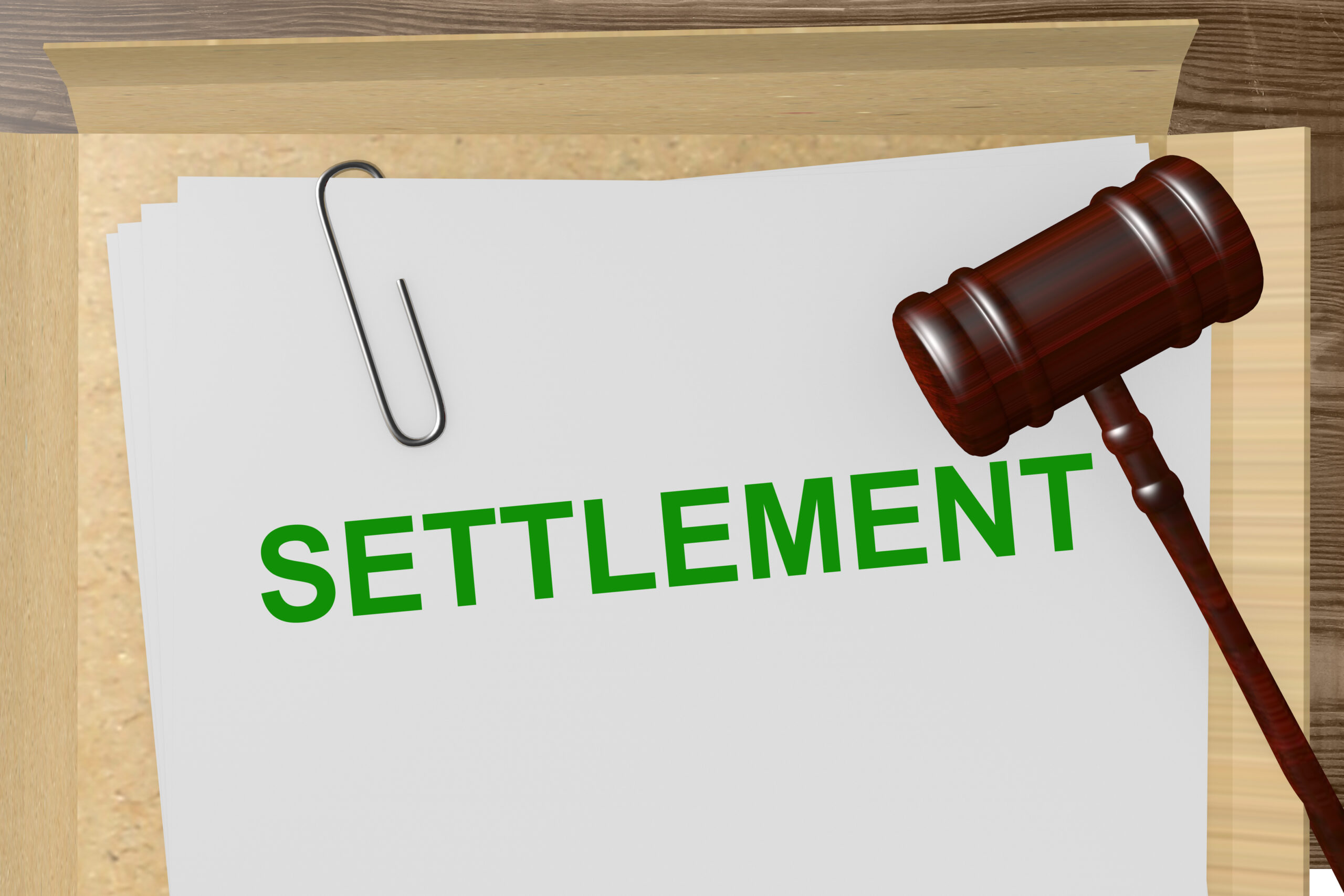“Judge Albright is preferred by patent holders because he runs an efficient courtroom that balances risks for both parties and that drives settlements. That increased the number of patent infringement lawsuits in his courtroom, which was used against him.”
 In February 2020, ParkerVision filed a patent infringement lawsuit against Intel in Judge Alan Albright’s Waco, Texas, courthouse in the Western District of Texas. Only three years later, and through the pandemic, today, the case settled all pending matters. ParkerVision still has remaining patent infringement cases in process against TCL, LG, MediaTek and RealTek in Judge Albright’s court.
In February 2020, ParkerVision filed a patent infringement lawsuit against Intel in Judge Alan Albright’s Waco, Texas, courthouse in the Western District of Texas. Only three years later, and through the pandemic, today, the case settled all pending matters. ParkerVision still has remaining patent infringement cases in process against TCL, LG, MediaTek and RealTek in Judge Albright’s court.
A settled case is the best way to close a patent infringement dispute. It not only reduces costs for the parties, but it also reduces the court’s burden of a trial. When the parties agree to settle, everyone goes home happy.
Driving Settlements
The key to driving a settlement is that the parties fully understand their risks and rewards. If one side thinks they can benefit from going through with the trial, they go to trial. But if both sides generally understand the risks associated with how the trial might end, they settle to avoid the costs and risks of trial.
Judges can manage this by controlling motion practice in a way that makes the issues clear. In most cases, that just means the court takes the time to understand the case, follows the law, and makes fair decisions. But this takes a judge experienced in the complexity of patent litigation.
Judge Albright, a former patent litigator, is a master at bringing the parties to settlement by balancing the motion practice of both parties. Judge Albright’s balancing act brings the parties to a better understanding of their respective risks and that understanding often drives the parties to settlement.
This is the real reason that plaintiffs prefer Albright’s courtroom.
Driving Litigation
Unfortunately, a patent court that drives settlements is not preferred by infringers. It is far better for infringers if the court panders to excessive motion practice and leaves lots of holes for appeal. This confuses risks and drives up the costs for both parties. Large infringers are generally better able to absorb costs than small patent holders, so increasing costs and delaying resolution puts them at an advantage.
In another ParkerVision case, ParkerVision v. Qualcomm in the Middle District of Florida, the court has allowed it to drag on since 2014—nine long years. Currently, this case is on appeal. The court seems to have encouraged excessive motion practice, which confused the risks to the parties and thereby stacked the odds against ParkerVision. When this happens, nobody settles, and everyone appeals, as has been the situation throughout this case.
Harming Patent Holders
Patent infringement suits often strike at the heart of an infringer’s business. In some cases, they can enjoin the infringer from the market for the invention, but in most cases, the infringer stands to pay hefty damages. This is a very real threat to the interests of huge multinational infringers and when they are threatened, they take action.
Judge Albright is preferred by patent holders because he runs an efficient courtroom that balances risks for both parties and that drives settlements. That increased the number of patent infringement lawsuits in his courtroom, which was used against him. He has been rebuked for attracting as much as 25% of all U.S. patent cases, including by some in Congress. These public attacks caused Chief Judge Orlando Garcia to issue an order directing that all patent infringement cases assigned in Waco be distributed among 12 of the district’s judges. This redistribution of cases radically dropped the number of patent infringement cases in Judge Albright’s courthouse.
This is an unfortunate result for patent holders generally, but a good outcome for ParkerVision today, thanks to Albright’s patent savvy.
Image Source: Deposit Photos
Image ID: 85264486
Author: Premium_shots

![[IPWatchdog Logo]](https://ipwatchdog.com/wp-content/themes/IPWatchdog%20-%202023/assets/images/temp/logo-small@2x.png)

![[Advertisement]](https://ipwatchdog.com/wp-content/uploads/2024/04/UnitedLex-May-2-2024-sidebar-700x500-1.jpg)
![[Advertisement]](https://ipwatchdog.com/wp-content/uploads/2024/04/Patent-Litigation-Masters-2024-sidebar-700x500-1.jpg)

![[Advertisement]](https://ipwatchdog.com/wp-content/uploads/2021/12/WEBINAR-336-x-280-px.png)
![[Advertisement]](https://ipwatchdog.com/wp-content/uploads/2021/12/2021-Patent-Practice-on-Demand-recorded-Feb-2021-336-x-280.jpg)
![[Advertisement]](https://ipwatchdog.com/wp-content/uploads/2021/12/Ad-4-The-Invent-Patent-System™.png)






Join the Discussion
7 comments so far.
El
February 13, 2023 10:51 pmLegal prognosis of Netlist vs. infringers Google, Samsung et al?
Curious
February 9, 2023 01:01 pmParkerVision’s damages expert said that Intel should pay at least $294,000,000. ParkerVision settled for $25,000,000, so do the math on who thinks that they were more likely to “lose.”
If I got into a trial with a 50-50 shot of winning, and I think I can make $300M on a win, settling for a tenth of that ($30M) is reasonable. That $30M gets received IMMEDIATELY. On the other hand, that $300M might not arrive for a decade depending upon appeals, retrials on damages, whatever. We’ve seen this type of tactic before by other large companies — they keep fighting until the bitter end.
The upside of taking an earlier settlement is that you can now starting working down your list of other infringers. It is far easier to get a settlement from a Tier B company when a Tier A company (e.g., Intel) settled.
It also makes a huge difference as to the financial position of the plaintiff. If the plaintiff is a large operating company, they are far better positioned to make a long-term bet that won’t pay of for many years down the road. The same cannot be said about a small company with few assets.
Even if I thought we had a 80% of winning, I might counsel a small company to take the $30M, and my guess is that most would follow that advice.
Patent litigation is the sport of kings, and unless the plaintiff is a king, the deck is stacked heavily against the plaintiff. This is why plaintiffs will take pennies on the dollar.
The $25M ParkerVision settled for is a huge amount.
Justice Sotomayor
February 8, 2023 02:13 pmJosh, but ParkerVision is about $50 MM in debt just for funding their litigations. They were way too litigious and bit off way more than they can chew. They’re now net about negative $30 MM (after their contingency counsel takes their cut). The company itself won’t make one penny off this settlement (the litigation funders will take it all)
Josh Malone
February 7, 2023 05:56 pm@Sotomayor — 8% of fair market value is really good for an inventor in our twisted U.S. legal system. Most inventors are getting less than a penny on the dollar.
Justice Sotomayor
February 7, 2023 04:05 pmParkerVision’s damages expert said that Intel should pay at least $294,000,000. ParkerVision settled for $25,000,000, so do the math on who thinks that they were more likely to “lose.”
Pro Say
February 7, 2023 02:33 pmIf judges in all courts were to merely take Albright’s approach, settlements would skyrocket; with trials dropping by at least half.
Josh Malone
February 7, 2023 01:15 pmMy case was in the Eastern District of Texas and still took 4.5 years and 14 visits to the Court of Appeals for the Federal Circuit. 29 Lawyers from 6 different firms, $20M in legal expense and tens of thousands of pages of filings. The U.S. justice system is badly broken. A handful of federal judges like Albright are working hard to make it fair.